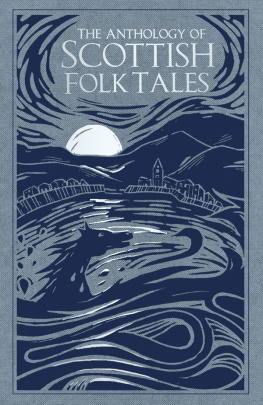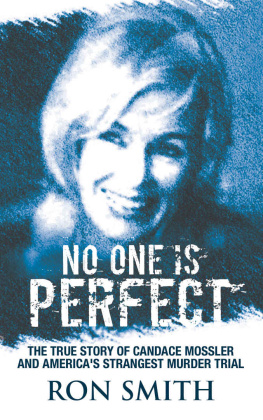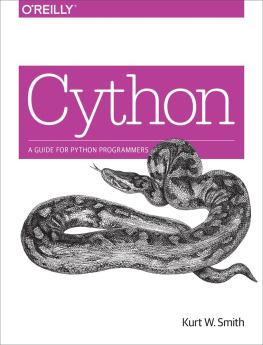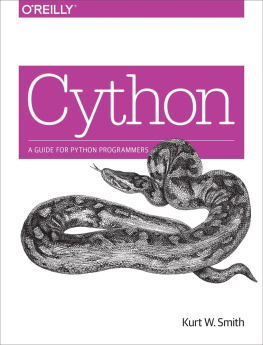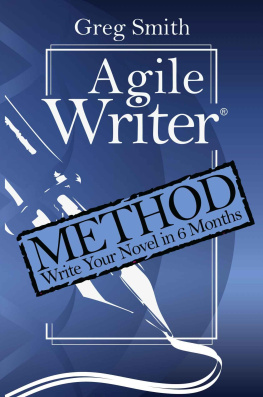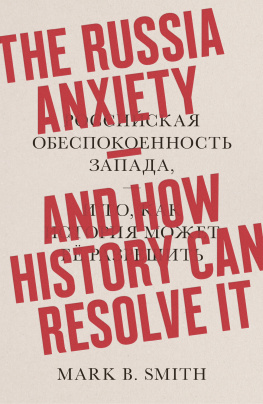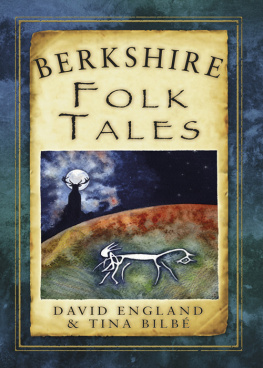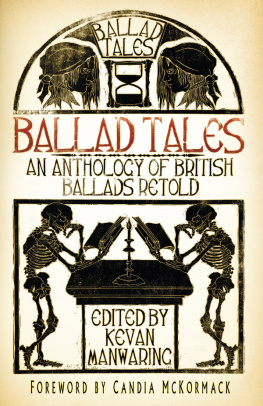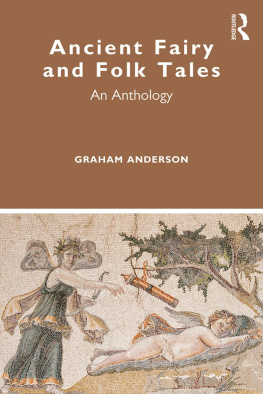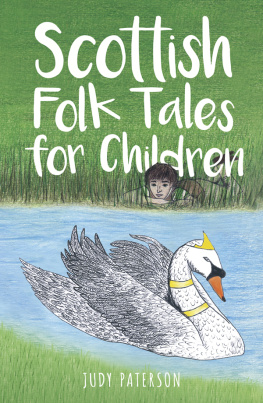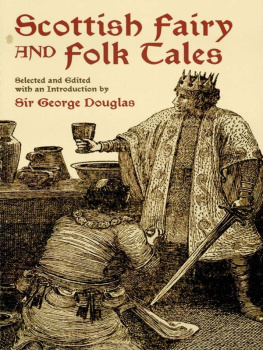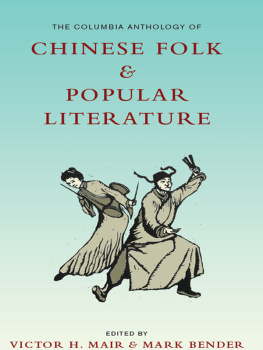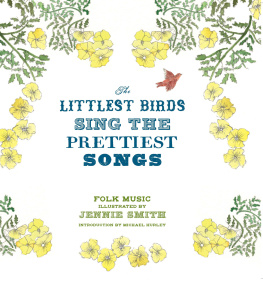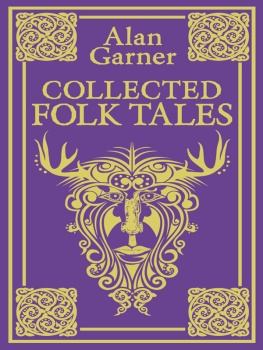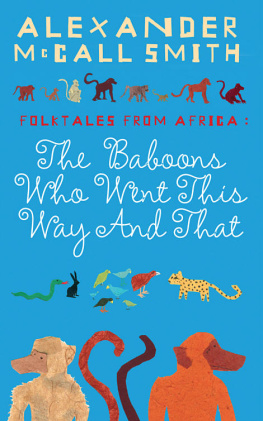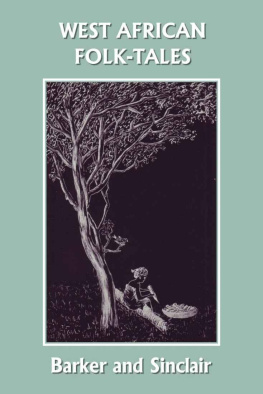Smith - The Anthology of Scottish Folk Tales
Here you can read online Smith - The Anthology of Scottish Folk Tales full text of the book (entire story) in english for free. Download pdf and epub, get meaning, cover and reviews about this ebook. City: Chicago, year: 2019, publisher: The History Press, genre: Detective and thriller. Description of the work, (preface) as well as reviews are available. Best literature library LitArk.com created for fans of good reading and offers a wide selection of genres:
Romance novel
Science fiction
Adventure
Detective
Science
History
Home and family
Prose
Art
Politics
Computer
Non-fiction
Religion
Business
Children
Humor
Choose a favorite category and find really read worthwhile books. Enjoy immersion in the world of imagination, feel the emotions of the characters or learn something new for yourself, make an fascinating discovery.
- Book:The Anthology of Scottish Folk Tales
- Author:
- Publisher:The History Press
- Genre:
- Year:2019
- City:Chicago
- Rating:3 / 5
- Favourites:Add to favourites
- Your mark:
- 60
- 1
- 2
- 3
- 4
- 5
The Anthology of Scottish Folk Tales: summary, description and annotation
We offer to read an annotation, description, summary or preface (depends on what the author of the book "The Anthology of Scottish Folk Tales" wrote himself). If you haven't found the necessary information about the book — write in the comments, we will try to find it.
Smith: author's other books
Who wrote The Anthology of Scottish Folk Tales? Find out the surname, the name of the author of the book and a list of all author's works by series.
The Anthology of Scottish Folk Tales — read online for free the complete book (whole text) full work
Below is the text of the book, divided by pages. System saving the place of the last page read, allows you to conveniently read the book "The Anthology of Scottish Folk Tales" online for free, without having to search again every time where you left off. Put a bookmark, and you can go to the page where you finished reading at any time.
Font size:
Interval:
Bookmark:


Dedicated by Scotlands Storytellers
TO
LAWRENCE TULLOCH
1943-2017
Well tak a cup of kindness yet
For auld lang syne
First published 2019
The History Press
97 St Georges Place, Cheltenham,
Gloucestershire, GL50 3QB
www.thehistorypress.co.uk
The Authors, 2019
The right of The Authors to be identified as the Authors of this work has been asserted in accordance with the Copyright, Designs and Patents Act 1988.
All rights reserved. No part of this book may be reprinted or reproduced or utilised in any form or by any electronic, mechanical or other means, now known or hereafter invented, including photocopying and recording, or in any information storage or retrieval system, without the permission in writing from the Publishers.
British Library Cataloguing in Publication Data.
A catalogue record for this book is available from the British Library.
ISBN 978 0 7509 9287 9
Typesetting and origination by The History Press
Printed in Europe
eBook converted by Geethik Technologies
Why is Scotland such fertile folk tale territory?
First of all, Scotland is a very diverse country, geographically and culturally. It is big and wee at the same time. It is part of Great Britain yet proudly independent in identity and imagination. From Shetland and Orkney in the north, to the Borders and Dumfries and Galloway in the south; from the Western Isles to Aberdeenshire and Fife in the east, landscapes and language vary, sometimes dramatically. In the Highlands, sea and mountain predominate, while in Perthshire it is river and glen.
Secondly, this is a living tradition. These tales have not been excavated from dusty tomes. All the contributors are current storytellers as we go to press, with the sad exception of Lawrence Tulloch who died in 2017. We are all honoured to be dedicating this book to that most generous host and inspirer of Scotlands contemporary storytelling renaissance.
But lastly, these stories matter because they bring us all closer to the natural world, to our shared centuries of human endeavour, and to sustaining values. Never has the world had so much need of such stories, and Scotland is proud to make its contribution. Here is a perfect introduction to Scotland, the storytelling nation explore and enjoy.
Donald Smith
Director, Scottish International Storytelling Festival


LAWRENCE TULLOCH
LAWRENCE TULLOCH was born in North Yell in 1942 and was introduced to storytelling by his aunt and his father. His interest in folklore led to him making several radio broadcasts, and he wrote for magazines and local papers. He had four books published and left two written but not published when he sadly passed away in February 2017.
As a storyteller he travelled extensively: to Washington USA, the Faroe Islands, Sweden, Norway, Slovenia, Ireland and Orkney, and he participated in several Scottish festivals including the International Storytelling Festival in Edinburgh and Celtic Connections in Glasgow. He recorded two tapes of stories and had them remastered to CDs.
He enjoyed telling stories and loved the audience reaction, which always left a twinkle in his eye.

At the Burgi Geo in northwest Yell there lies the remains of an Iron Age fort. It is on a headland joined to the rest of the island by a narrow neck of land. There are rows of standing stones that lead, on one side, into the fort, but on the other side the standing stones lead the unwary over the high cliff and to their doom.
Long after the original inhabitants left, the fort was taken over by a ruthless and cruel band of Vikings who preyed on the honest and hardworking udallers: West-A-Firth, in those days, was a wild and lawless place.
It was late autumn and the children of West-A-Firth were preparing for Hallamas. Wearing the traditional straw hats, they had been to every house in the area collecting money the taditional party that took place every year. All the houses that is, save one. It was a miserable hovel deep in the hills, where the Spaeman, the hermit Isaac Omand, lived. He welcomed no one and no one knew how he made a living. If he was ever heard speaking it was always in riddles that no one could understand.
All the money collected for Hallamas was given to Mary. She was a spinster who lived alone but she loved children and she was always to the fore at Hallamas time. Along with Martha Rassusson and Jenny Ninian she went to the shop at Glippapund to buy the food for the party.
For the rest of the week they baked fatty bannocks, currney buns, oven sliddericks and dumplings. They made tattie soup they kirned for fresh butter, kirn milk and blaand. A lamb had been butchered and meat and mealy puddings were cooked.
When Mary returned home after visiting a neighbour she was distraught to find that the robbers from the Burgi Geo had raided the house and taken everything. On being told, the Oldest Udaller called a meeting and the folk came from Setter, the Neap, Graven and Vigon to discuss what they could do.
There was no question of confronting the Vikings; they were far too powerful and to try and fight them meant the certain loss of life. Sadly there were no suggestions and most were resigned to their fate.
Der only da wan thing we kan d, declared the Oldest Udaller, we maun geng an ax the Spaeman.
Der nae se o dat, said Sigurd Ollason, hell never spik tae wis an even if he dus well nivver keen whit he means.
In the absence of any other ideas, Sigurd and Tirval Ertirson were sent to consult the Spaeman. When they arrived at his house they got the impression that Isaac Omand was expecting them.
He was outside, a tiny man dressed in rags; he had a long grey beard and he had not washed for a very long time. He never gave them a chance to speak but said in a shrill wavering voice:
Da Burgi Geo men ir fat an greedy
While wis puir fok ir tin an needy
Bit ta mak things rite an weel
Ye maun se da Hallamas mareel.
So saying, he went inside and shut the door leaving Sigurd and Tirval speechless. Feeling that their journey had been wasted, they made their way back to the house of the Oldest Udaller. They told him the Spaemans rhyme and waited for his response, which took some time in coming.
Da only plis it we kan get mareel fae is da sea so sum o you il haeta geng ta da kraigs.
They saw it as futile but they did as they were told. They took their homemade rods and began fishing from the rocks. When the light began to fade they were astonished at the mareel in the water. They had never seen anything like it: the sea, the fish and the fishing line flashed with ribbons of fire.
On the way home Sigurd suddenly had an idea of how they could use the mareel. He was confident that the robbers would come to steal the fish so he got Tirval and others to skin the piltocks and sillocks. From the womenfolk he got old blankets and pieces of linen and they began to sew the fish skins onto the cloth.
Font size:
Interval:
Bookmark:
Similar books «The Anthology of Scottish Folk Tales»
Look at similar books to The Anthology of Scottish Folk Tales. We have selected literature similar in name and meaning in the hope of providing readers with more options to find new, interesting, not yet read works.
Discussion, reviews of the book The Anthology of Scottish Folk Tales and just readers' own opinions. Leave your comments, write what you think about the work, its meaning or the main characters. Specify what exactly you liked and what you didn't like, and why you think so.

